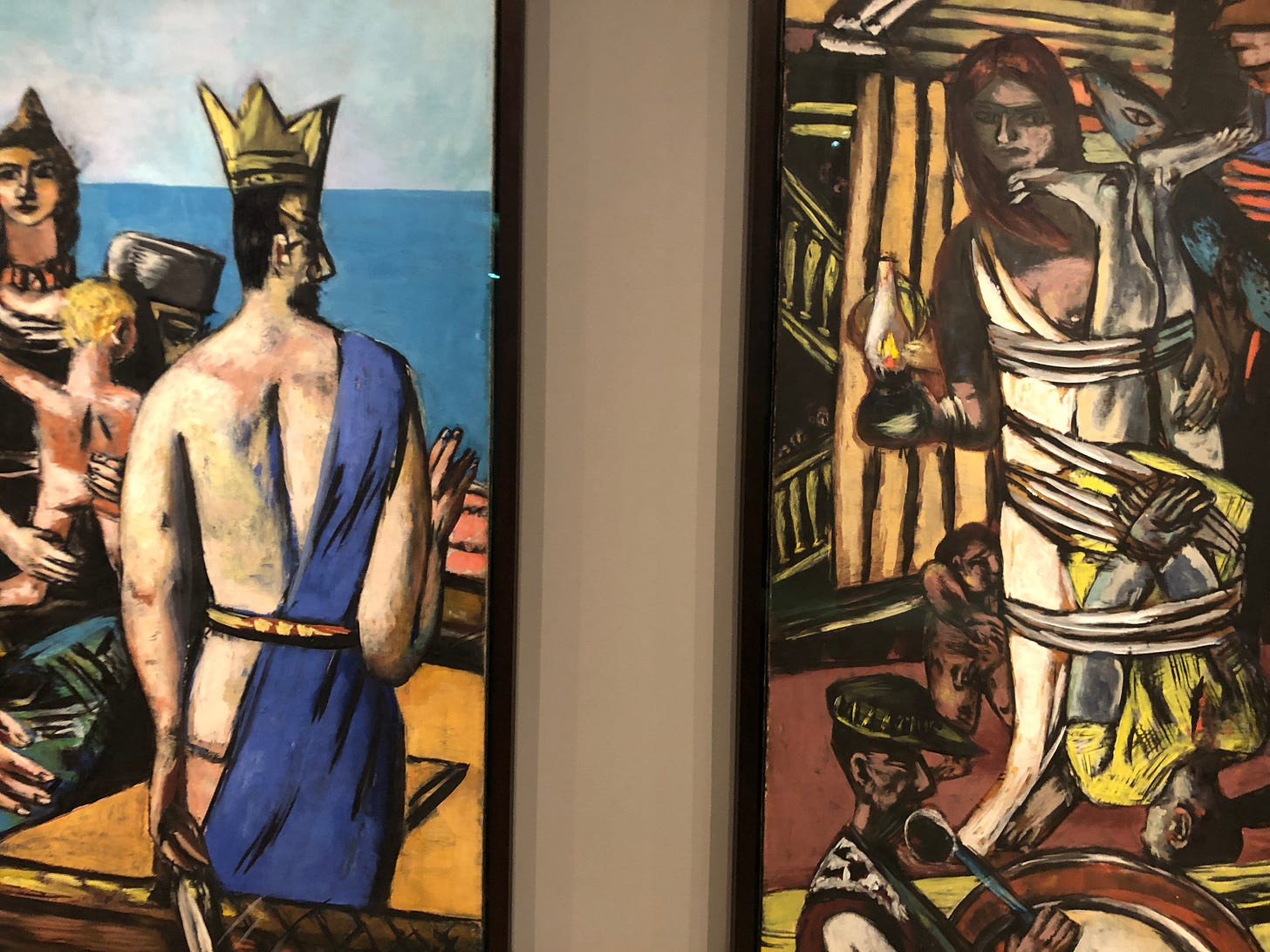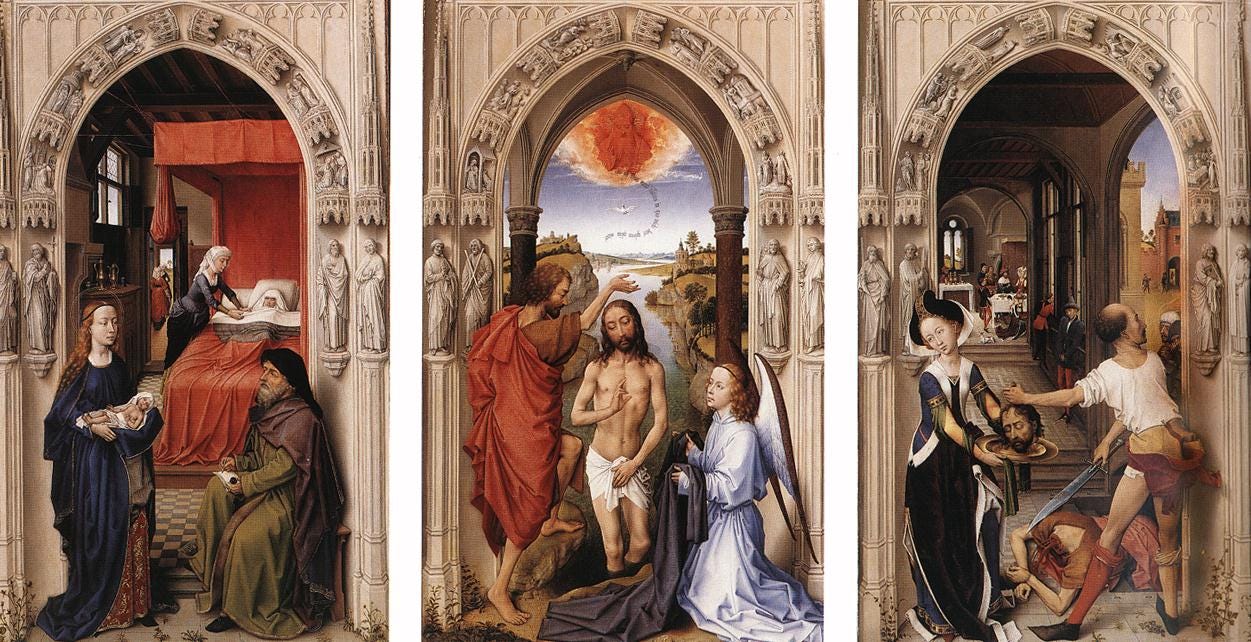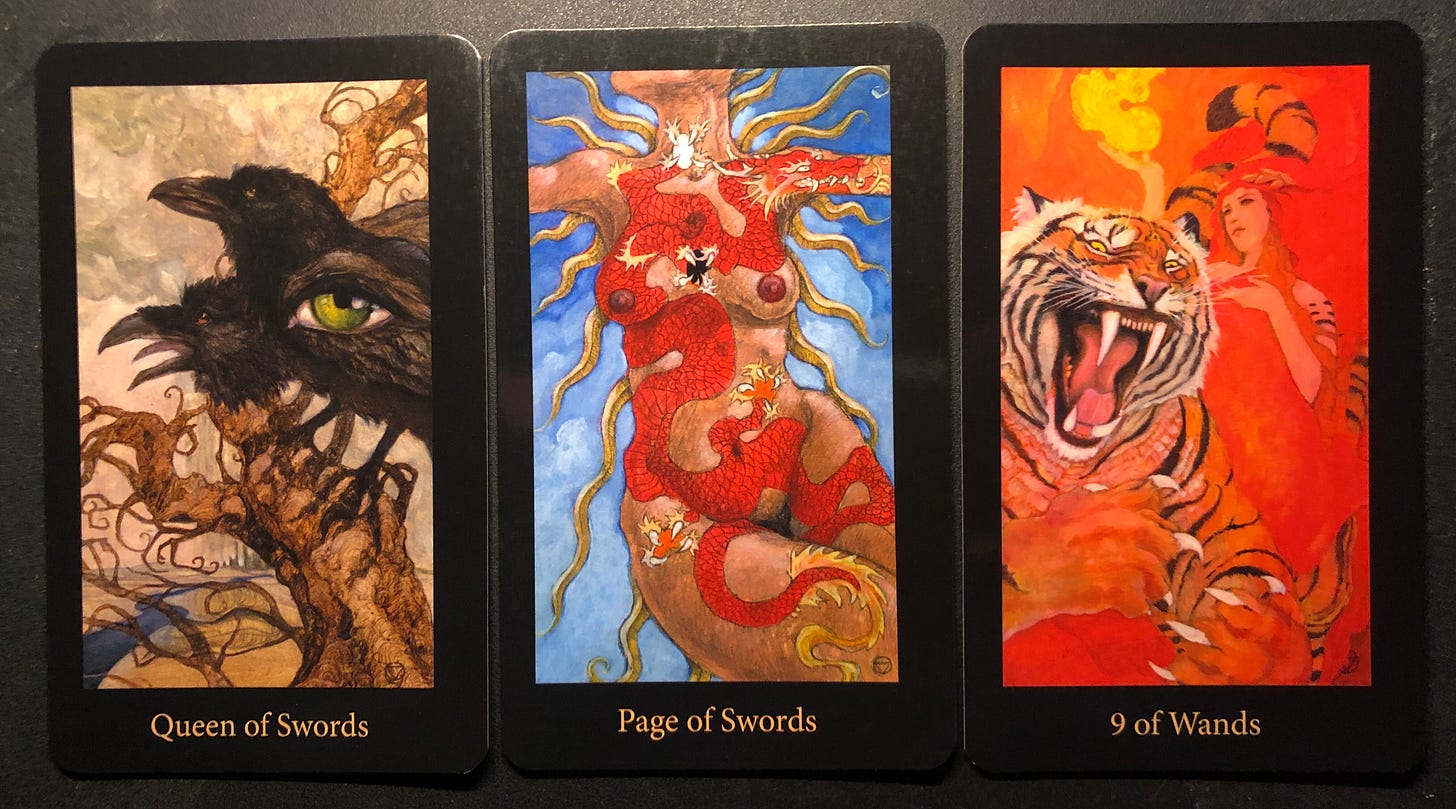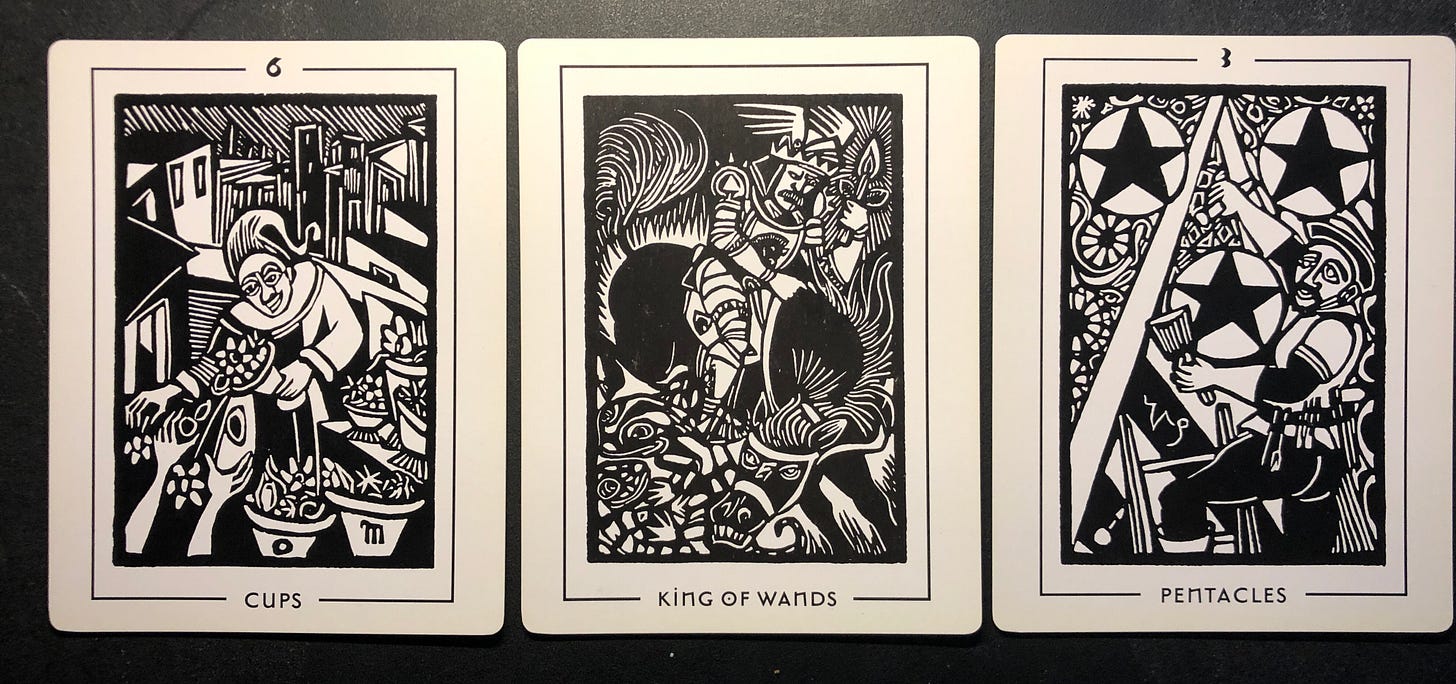Visiting the Museum of Modern Art last weekend I was thrilled to see that they had put one of Max Beckmann’s epic triptychs, Departure, back on display.
The three pictures are distinct images, with no clear theme. Yet since they form a single work, the mind tries to bridge the gaps between them.
Triptychs were common in medieval and Renaissance Europe. Usually with religious themes, they assumed that the viewer knew the bible stories being referenced, and could join-the-dots easily. Here’s Rogier van der Weyden’s altarpiece with three scenes from the story of St John the Baptist.
Beckmann revived the use of triptychs in the modern era, but his works were mysterious, with no clear story being referenced. We viewers are left with “gaps” between the images, and must somehow complete the artwork on our own.
Knowing that Beckmann fled Nazi Germany in 1937 provides a possible context for some of the imagery, but is not conclusive.
Triptychs also bring to mind the 3-card spreads often used in Tarot practice. We are given three random cards and our Unconscious somehow tries to discern meaning from them.
Dwelling in the gaps between the cards may actually be the most critical practice in tarot reading. Resting in that liminal space is what allows creative meanings to arise from the triptych.
Gaps are also important in comics, where the space between two panels is known as “the gutter.”
Scott McCloud explains this in his classic book Understanding Comics:
McCloud expands upon this by explaining how these gaps offer the comics reader an invitation to closure, which he defines as the “phenomenon of observing the parts but perceiving the whole.”
Some film directors deliberately root such “gaps” in their work, forcing the audience to imagine much more than is actually on-screen.
In movies such as Mulholland Drive and Lost Highway, David Lynch will montage together sets of scenes that make no logical sense, and the viewer has to generate their own coherent meaning from his incompatible clues.
The strange power of Lynch’s movies springs from these deep gaps that only our private Unconscious can leap. Closure is our responsibility, not his.
Beckmann’s triptychs are an invitation to the viewer to learn to be comfortable dwelling in the gap. It is a gift to us from the artist.
______________________________
NOTES:
Images from “Understanding Comics” are copyright Scott McCloud
Tarot decks shown are from “The Mary-El Tarot” copyright Marie White, and from “The Light and Shadow Tarot” copyright Brian Williams & Michael Goepferd.















Something vivid happens when the Tarot images enter the scene, and magically, it's to the point!
Wow! Never seen Beckmann’s triptychs before, they are stunning! Went to see Ghent altarpiece last year and have often seen Bacon’s at the Tate which I love. There is something about a triptych that invites reverence, that demands a longer look, that stirs feelings of awe in me.